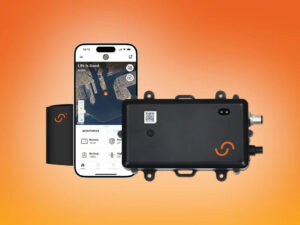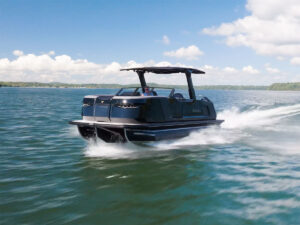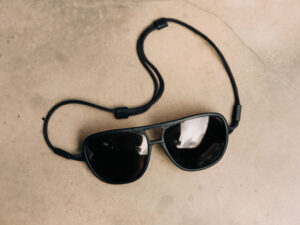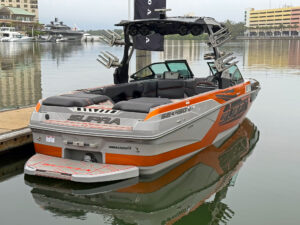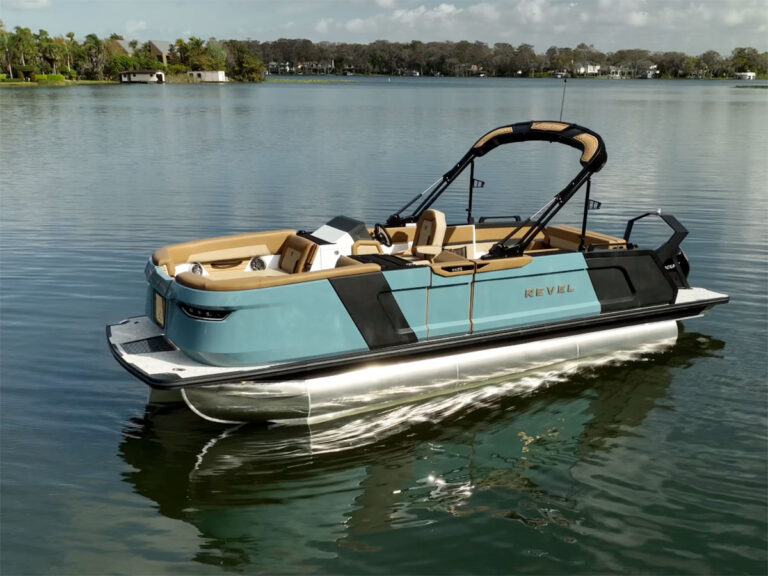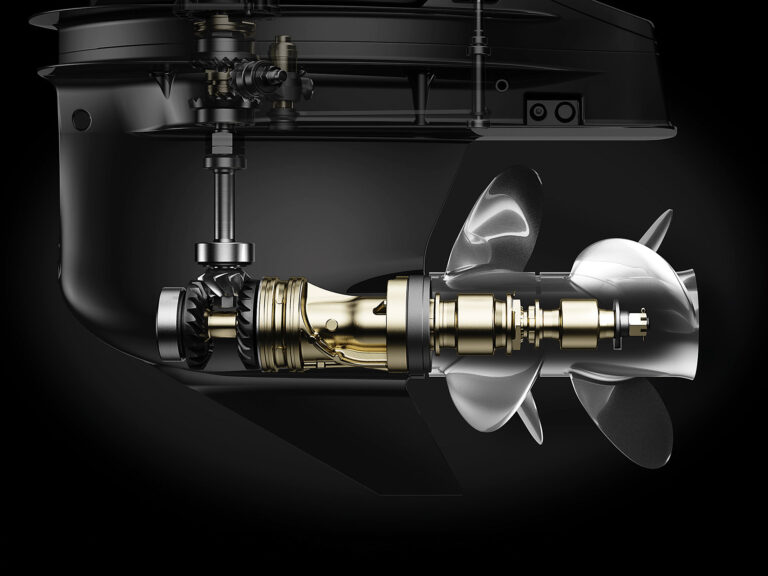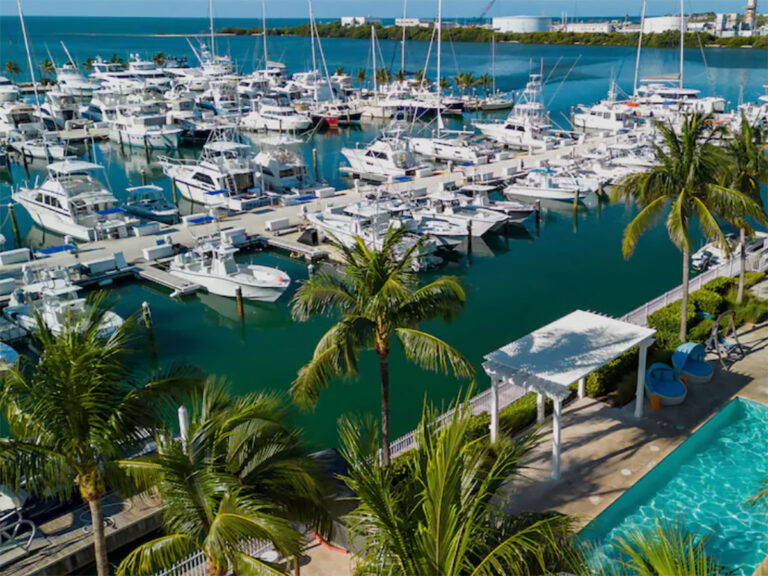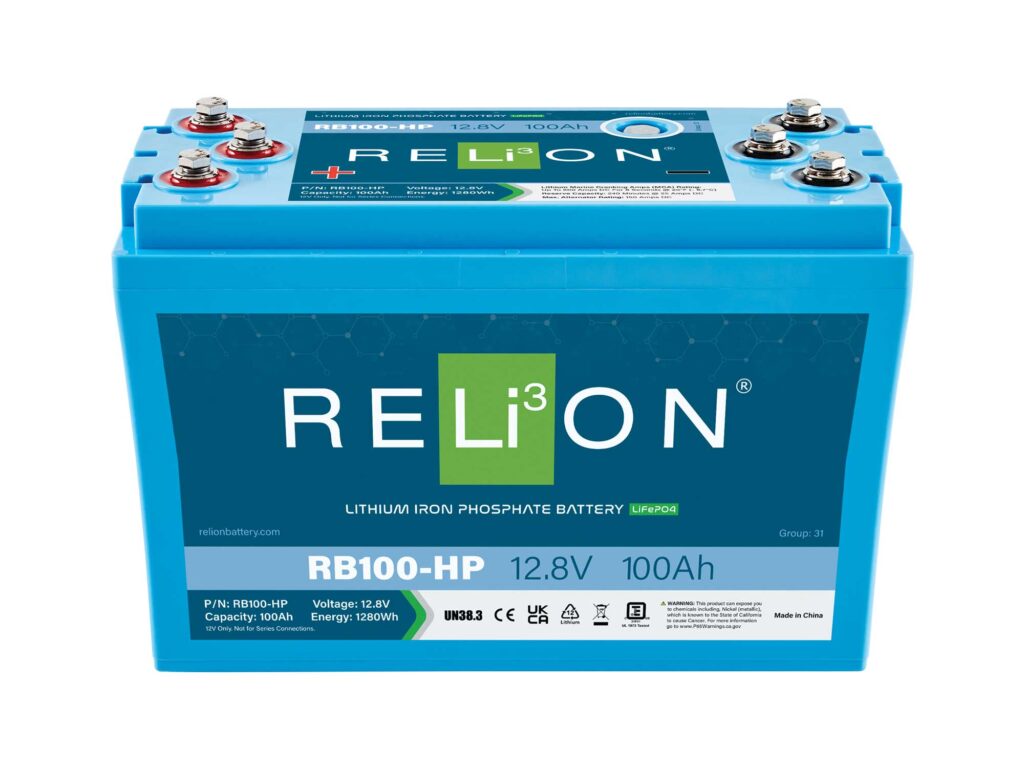
In the past, Boating has advised boaters to avoid the use of lithium-iron-phosphate (LFP) batteries in marine starting applications. But ReLiOn is rewriting that rule with its RB100-HP, the first and only LFP approved for use as a starting battery for a number of midrange to upper-range Mercury Marine outboards.
The RB100-HP is designed to serve as a dual-purpose (starting and deep-cycle) 12-volt drop-in replacement for a Group 31 lead-acid battery. Though the same physical size as a Group 31, it weighs about half as much as its lead-acid equivalent—a benefit common to all LFP batteries.
However, unlike other LFPs designed only for deep-cycle applications, the RB100-HP’s battery management system (BMS) is programmed to produce the bursts of high energy needed to start marine engines. It can pump out 800 marine cranking amps for 8 seconds or more. Also unique to this LFP battery is the ability to safely accept the standard 12-volt electrical charge produced by the engine alternator. Other LFPs require specialized charging systems to safely and fully replenish their reserves.
The battery was built to complement the propulsion system, not vice versa, says Darren Massey with ReLiOn tech support. “The battery is designed to mimic a lead-acid, but with less maintenance and more reserve power,” Massey explains. The RB100-HP offers 178 percent more reserve capacity than a comparable lead-acid battery, and will accept an alternator charge up to 150 amps.
The RB100-HP is currently approved for starting Merc’s 2.1L 75 to 115 hp outboards, 3.0L 150 hp engines, 4.6L V-8 and 3.4L V-6 175 to 300 hp models, 2.6L L-6 200 to 400 hp outboards, 5.7L V-10 350 to 400 hp models, and 7.6L V-12 500 to 600 hp outboards. There are no MerCruiser inboards or sterndrive engines on the approved list.
Note that Mercury and ReLiOn are both owned by Brunswick Corp., so it is natural for these brands to work together in developing and certifying this new battery technology. But what if you don’t run one of the approved Mercury outboards? Can boaters use the RB-100-HP with engines from other brands?
“We always advise boaters to check with their engine and boat manufacturer as to which batteries are approved for use with their particular models,” says Mara Rust, senior category manager for Power Systems at Navico, a division of Brunswick.
Whatever engine you run, keep in mind that a BMS in an LFP can shut down the battery if it senses danger such as a surge or voltage spike. This BMS feature is called “protection mode,” and it is one of the reasons for traditionally avoiding LFPs in starting applications. If a battery is shut off while an engine is running, it could fry the rectifiers in the alternator. However, the certified Mercury outboards will continue to run and remain undamaged if the starting battery is shut off for any reason, says Brad Taylor, product integration and technical specialist for Mercury. “The approved Mercury engines will protect themselves from this situation, known as a ‘load dump,’” Taylor explains.
Read Next: Installing a Lithium Battery System
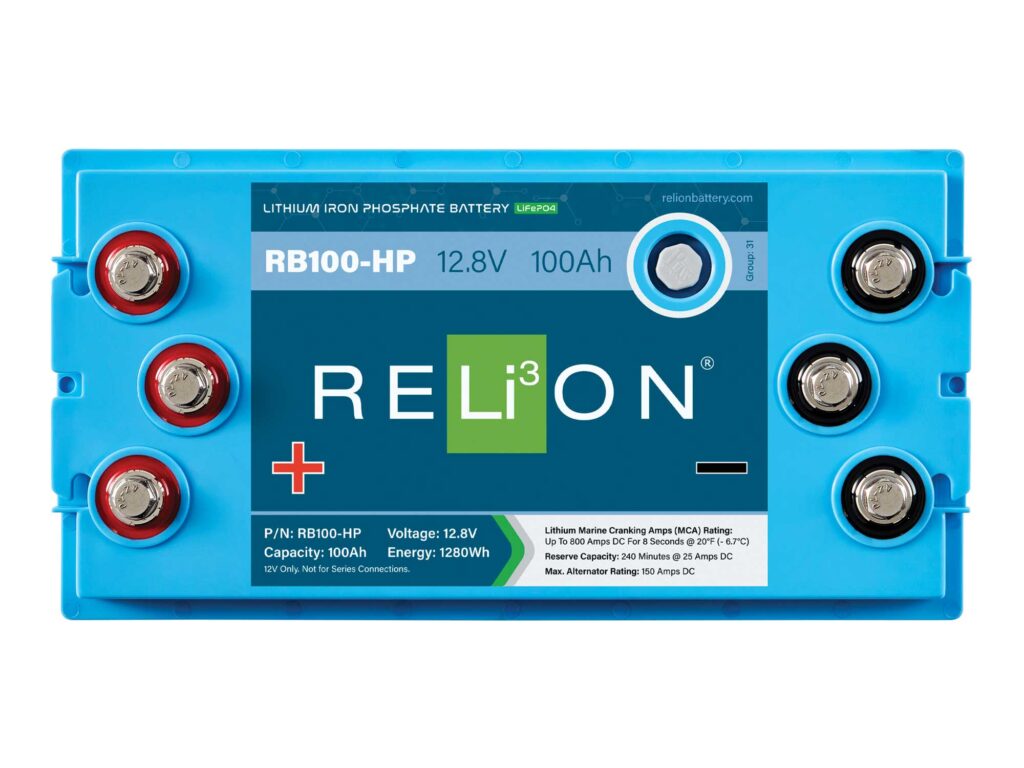
Before you buy, install and use the BR100-HP to start a nonapproved engine from any brand, be sure to check with the engine builder to make sure you will not fry the rectifiers in your motor’s alternator if the LFP goes into protection mode.
The RB100-HP has three positive terminal posts and three negative terminal posts. “Having six battery terminals versus two on standard batteries offers boaters more flexibility when connecting electronics as well as a motor to the battery,” says Rust, who notes that ABYC standards call for limiting the number of ring connectors to four per terminal stud. This LFP also boasts an IP67 waterproof rating, which protects the BMS for up to 30 minutes in depths to 1 meter.
Lithiums are known to last much longer than lead-acid batteries, but what kind of service life can you expect from a starting LFP? Since life expectancy will vary with use, Rust points to the 10-year limited warranty, which includes a three-year free replacement or repair period. The BR100-HP carries a manufacturer’s suggested retail price of $999.95. To learn more, visit relionbattery.com.

